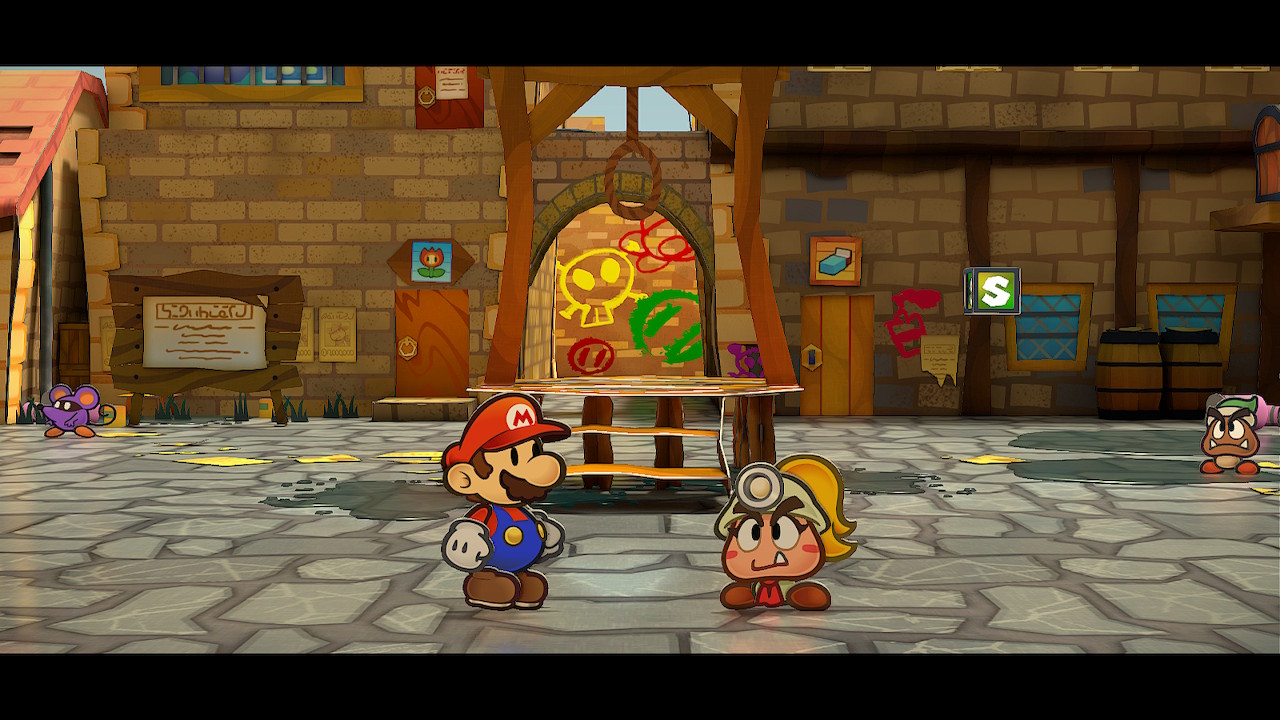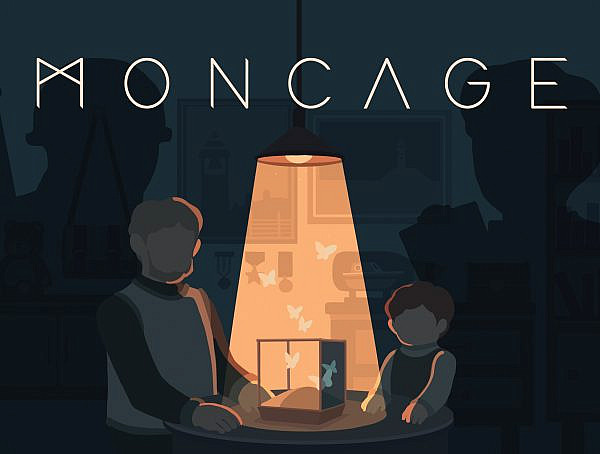The Nintendo GameCube’s library has garnered a reputation for having many high-quality titles that are now difficult to access on today’s systems. It’s no surprise that fans of this bygone era have been begging Nintendo to rerelease these games for modern consoles. One of the most sought-after titles has been the much-beloved Paper Mario: The Thousand-Year Door which is now available as a slick remaster on Nintendo Switch.
Paper Mario: The Thousand-Year Door is an RPG where our titular two-dimensional hero has travelled to the shady town of Rogueport to meet Princess Peach, who has found a map that leads to an ancient treasure. In a shocking and unexpected twist, Peach gets kidnapped by… X-Nauts? Yes it’s not Bowser this time so that’s a nice change. To uncover the X-Nauts’ plans and save Peach, Mario needs to collect the seven Crystal Stars and open the game’s namesake: the Thousand-Year Door buried below Rogueport. With the princess thoroughly kidnapped (again) and the MacGuffins set, the path is clear for Mario to set off on his familiar, yet unique adventure.
Even though this is a formulaic setup for a Mario game, it’s the way that this story is told that makes it appealing. From the lands you travel to the characters you meet, everything is overflowing with a charm and whimsy that’s to be expected from a Mario game, but this one feels different. The game’s paper-inspired aesthetics grants it a unique identity that keeps the game feeling original, even decades after its initial release. You’ll start a new chapter and travel to a new land, that yields an entirely different paper-like art-style. Rogueport especially is such a refreshing setting to see Mario in. The sketchy streets perk your curiosity and make you want to check every crack in the wall for potential secrets.
While exploring the overworld you’ll take part in some light platforming and puzzle-solving to uncover these secrets hidden behind the folds. This is where the paper in Paper Mario comes into play. You’ll be sliding yourself underneath locked doors and turning yourself into a paper airplane to cross large gaps. Luckily you also have cast of colourful characters that help you on your quest as well. Not only is each companion delightfully charming, but they’re useful both in and out of combat. In the overworld they’ll grant you access to abilities such as blowing away loose sheets of paper to reveal hidden doors. While in combat each companion has their own special powers that you can use to exploit enemy weaknesses.
Combat in Paper Mario follows a turn-based system where you control both Mario and one of his partners, choosing actions for each of them to perform out of a menu. You can also deal more damage when attacking and prevent more damage when defending by executing timed button presses during the action. This keeps the combat engaging on more than just a strategic level. Even if you know what actions you need to choose, nailing those button prompts for extra damage never gets stale. You can feel this bouncy feedback that keeps the combat satisfying long into the runtime.
That said, considering this is a remaster of game that is now twenty years old it does have some leftover trappings that are common in these older games. There’s a reluctance from the game to give you any form of guidance beyond what you should do to advance the story. While I appreciate this as an incentive to discover Rogueport’s secrets, this lack of guidance did lead to me not realising that I could level up my companions. I finally found this system twenty hours into my playthrough, after berating my buddies for being useless and doing no damage. I’ll gladly blame my own incompetence on this though.
Something I won’t take blame for though is the game’s inconsistent pacing. For the most part the story moves at an appropriate speed, however there are certain sequences that outstay its welcome. This usually happens if you have a constant onslaught of fights, or if you have to backtrack to previous locations and you get caught fighting low level enemies that show no real threat. These are however just small blemishes on an otherwise stellar game.
It’s easy to feel jaded in an age where remasters and remakes are so prevalent. But Paper Mario: The Thousand Year Door holds up immensely well, not looking a day older pass its original release. Whether you were already a fan of the original or you’ve been curious to experience one of Mario’s greatest and most unique adventures, it’s worth playing this classic that was once trapped away on the twenty-year old console.
Basic Information:
Developer: Intelligent Systems
Publisher: Nintendo
Release date: 23/05/2024
Platforms: Nintendo Switch
Genres: RPG
PEGI: 7
Photos: screenshots from Paper Mario: The Thousand-Year Door (Intelligent Systems) taken by the author, Ben Yaxley.
A lifelong gamer who still listens to pop punk music despite being in his thirties. Loves JRPGs and many multiplayer games, but he tends to get too competitive at Mario Party. Will also be overly critical of fishing minigames.
You might also like
More from Game Reviews
Moncage Review: A Puzzle Game with Mind-Boggling Optical Illusions
Solving a huge #optical_illusion #puzzle in a tiny cube to discover a dark, #emotional story of trauma
Mining, Mayhem, and Bugs: A Deep Rock Galactic Review
Fight monsters, mine riches, and cause chaos with your dwarf crew — welcome to Deep Rock Galactic!
Microsoft Solitaire: classic games to kill time
Perhaps the most played games in offices worldwide, Microsoft Simulator is a pinacle of design from the era where games …


















